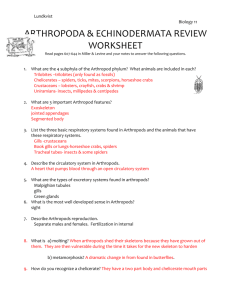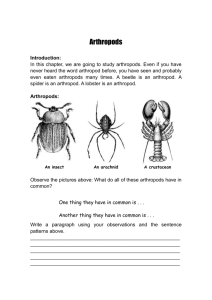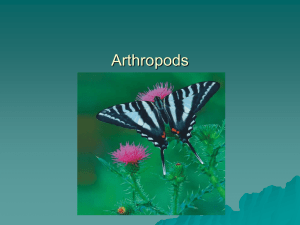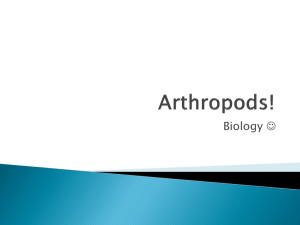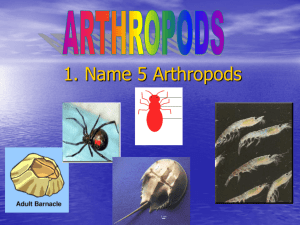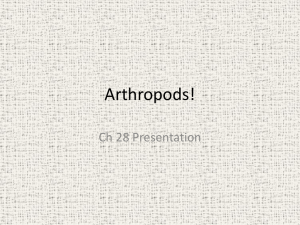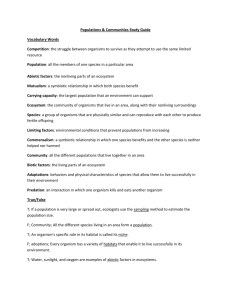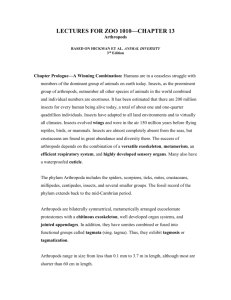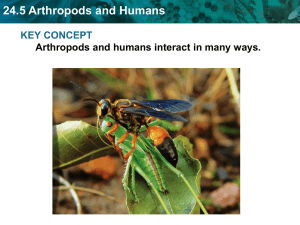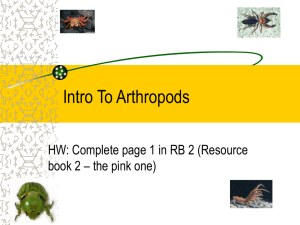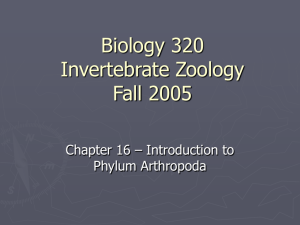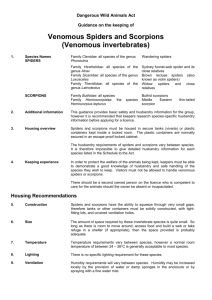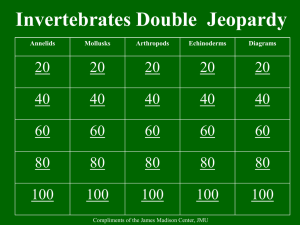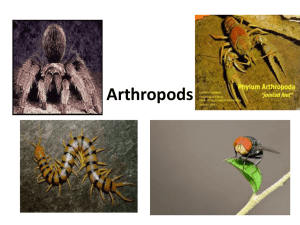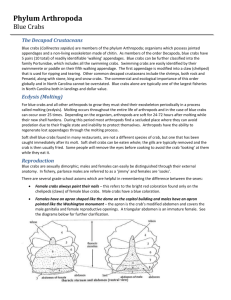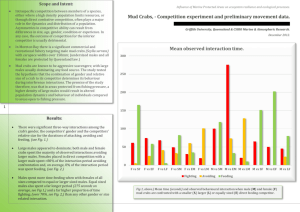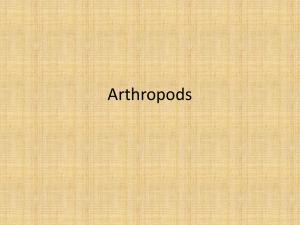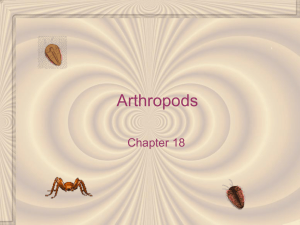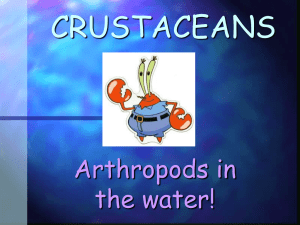Chapter 14 Notes - Herscher CUSD #2
advertisement
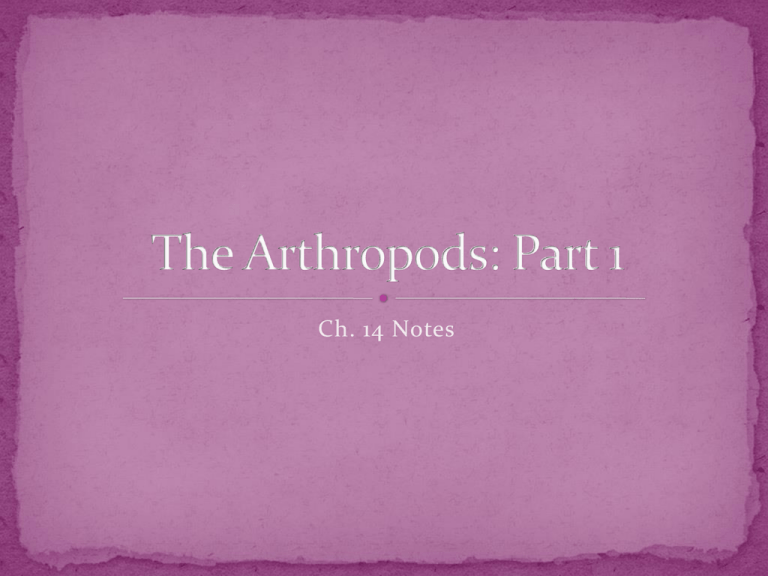
Ch. 14 Notes The Giant Prickly Stick Insect (Extatosoma tiaratum) is found in Australia. They are herbivores who cannot bite or sting in defense, but will take a scorpion-like stance to ward off predators and release an odor that smells a lot like toffee or peanut butter. Successful in most habitats First terrestrial animals 1.) Exhibit Metamerism (segmentation) with Tagmatization (specialization of body regions) head, thorax, abdomen 2.) Have jointed, chitinous exoskeleton; cuticle Chitin – a polysaccharide (similar to cellulose) Secreted by epidermal cells Protection & Support Ecdysis – shedding of the exoskeleton to allow for growth; molting 3.) Undergo metamorphosis Change in shape/structure Transition of developmental stages (larva adult) Reduces competition for resources Caterpillar eats leafy greens; butterfly eats nectar 4). Have an open circulatory system Hemocoel – the cavity where blood is released from blood vessels Internal organs are bathed by body fluids in the hemocoel provides for the exchange of nutrients, wastes, and gases Trilobitomorpha – extinct – trilobites 1. Marine Cambrian-Carboniferous time period Chelicerata – spiders, mites, ticks, horseshoe crabs, sea spiders, scorpions 3. Crustacea – ‘hard shelled’ – crayfish, shrimp, lobster, crabs, water fleas, barnacles 4. Myriapoda – millipedes & centipedes 5. Hexapoda – ‘six legs’ – insects & their relatives 2. Body divided into prosoma & opithosoma Prosoma – ‘cephalothorax’ – a sensory, feeding, and locomotor segment Contains eyes No antennae Paired appendages 1st pair = chelicerae – pincher like; used for feeding May be specialized fangs 2nd pair = pedipalps – usually sensory, feeding, locomotion, or reproduction 3rd pair + so on = walking legs Opithosoma – Segment that contains digestive, reproductive, excretory, and respiratory organs Class meristomata 1. Horseshoe crabs Giant sea scorpions (extinct) Class arachnida 2. Spiders, scorpions, ticks, mites Class pychogonida 3. Sea spiders Only 4 species of horseshoe crabs living today Atlantic Ocean & Gulf of Mexico Body unchanged for 200 million years Dioecious Scavenagers – eat annelids and small molluscs Book gills: used for gas exchange between blood and sea water Impermeable exoskeleton to retain water Mostly carnivores Spiders produce webs to trap small arthropods to eat All dioecious (except for barnacles) Mostly aquatic (except for some isopods & crabs) 2 Differences that separate crustaceans from other arthropods They have 2 pairs of antennae They have biramous appendages (branches into two) The largest class of crustaceans Common members= crayfish, shrimp, lobsters, crabs, copepods, isopods Oviparis (most arthropods) Females lay eggs that develop outside the body Viviparis (Primitive arthropods) Eggs in female reproductive tract Females provide nutrients to nourish embryo Ovoviviparous (Many arthropods) Eggs develop inside reproductive tract Nourished by food stored in egg Divided into two regions Cephalathorax Fusion of a sensory & feeding tagma (head) with a locomotor tagma (thorax) Abdomen Posterior to the cephalathorax Has locomotor and visceral functions 1st & 2nd pair = Antennae & Antennules 3-5 – associated with the mouth 3rd = mandibles – chewing/grinding structures 4&5 = Maxillae – food handling 6-8 – maxillipeds – sensory & food handling (last 2 have gills) 9-13 – Pereopods – walking legs (10 legs) 9 = cheliped = pincherlike, used for food capture 13 = pleopods (swimmerets) Shrimp, water fleas Primarily fresh water Flattened, leaf-like appendages used in : Respiration Filter feeding Locomotion Barnacles Monoecious Some are parasites
